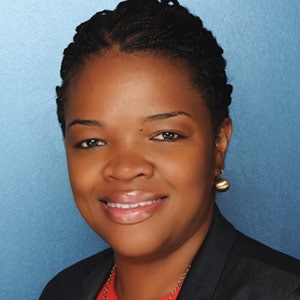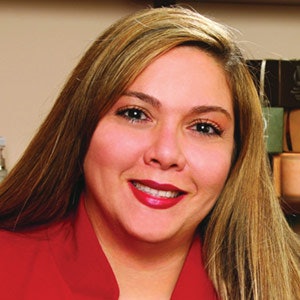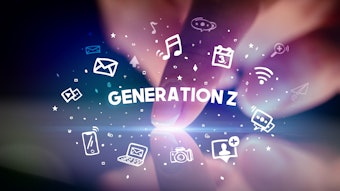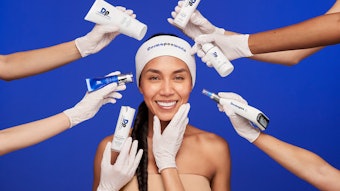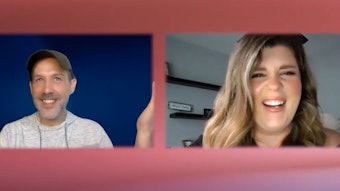
Editor’s note: Part II of the Mind on Millennials series will discuss management of millennial staff for best success in the April 2017 issue of Skin Inc.
Spa and skin care consumers are getting younger and more demanding. Generation Y, commonly known as millennials, are referred to as those born between 1980–2000 depending on the source. This generation is over 83 million strong and surpassing the stronghold of baby boomers (75.4 million).1 Millennials comprise 25% of the population and are the most educated, tech-savvy and socially conscious generation in history. With a cohort of so many comes buying power— an estimated $600 billion in spending annually, which is expected to grow to 1.4 trillion by 2020.2
Generation Y’s Spa Needs
As the spa and skin care industry moves into the new frontier of attracting and retaining millennial consumers, the industry must shift into a well-planned business model with intention, mindfulness and charity. In October 2016, the International Spa Association (ISPA) released a survey assessing the challenge of attracting millennials into the spa. The study revealed women continue to comprise the majority of spa-goers in the cohort. Millennial women sought to de-stress and treat themselves with spa services, while millennial men visited spas to treat injuries or relieve pain.3 These male spa clientele also sought a space of peace and solitude. Once inside, millennial spa-goers wanted a healthy refreshment at the start of the experience and samples to take home at the end.
Top requested services for this generation were massages, nail services and facials—a shift in the orders of services from previous generations of spa-goers. They favored customizable services over traditional pre-set menu offerings.
Millennials seek stress relief rather than indulgence from spas and are avid seekers of a more holistic wellness approach to everyday living.
Determine Your Why
Unlike baby boomers and generation X, millennials are not content with being marketed to. This group wants to be part of the marketing and even improved by the concepts. What does this mean for spa and skin care locations? It goes back to the core of business. What is the mission of the organization, and it has to be more than just about profits and beauty.
In his top-viewed TEDx talk, Simon Sinek discusses the power of “why.” Why do we do what we do? It is a concept linked to the core foundation of any organization, but especially in the spa and skin care industry.
With so much information available, creating a unique voice is necessary to set a spa apart from the masses. The process of differentiation requires research, seeking a product line that is aligned with the spa’s identity and business model.
Give Back
Once an organization has established “why,” the concept has to connect with the audience and allow them to feel better about the interaction and ultimately themselves. Instances of this can be seen in Toms Shoes and Esperos Bags. In both cases, the company gives to a cause when the consumer makes a purchase—the perfect example of cause and effect marketing. Though spa managers may not be able to replicate this exact model, the concept is of assisting guests in their goals to give back through supporting the spa industry. There are many small and big ways to do this on a shoestring budget if spas harness and align themselves with strategic like-minded vendors committed to paying it forward.
You can host a monthly charity event to support women in the local community, for example. Planning events for Global Wellness and Earth Day as well as creating charity events for millennials to attend should be part of each spa’s marketing mix. Again, this is where your choice of a strategic vendor can be valuable, as some market leaders offer event planning, support and even promotional/merchandising programs to enhance and support your efforts.
Tech Consumption
Millennials have grown up in the information age with the internet, cell phones and social media as a staple of life. Their main sources for news are television (65%) and internet (59%). As such, 75% of millennials are on some form of social media and seek connection and peer interactions. A surprising 80% sleep with their cell phone next to their bed, so that they are never longer than a quick glance away from the next text or post.4
With mission and purpose in hand, reaching millennials has never been easier. Big marketing companies have been made redundant with the power of word of mouth via social media. Word of mouth has been and still is the best form of marketing, especially with millennials. With social media platforms like Snapchat, Instagram, Facebook and YouTube, reaching millennials has never been easier. Though social media can be a double-edged sword, millennials rely on the information posted by friends and influencers to make decisions. The same platform can be used to complain about an experience, which is common among the generation.
The high-tech demands of millennials have yet to impact their expectations of a spa experience, except preferring free Wi-Fi in locations. They continue to use in-person interactions or the phone to book appointments. The same is true for product purchases; this generation prefers to buy retail in store or from a laptop and not an app—yet.
Innovate
Organizations have a great opportunity to innovate the industry. In the words of Peter Drucker, “a business has but two functions: marketing and innovation.” It is essential to do more than talk the talk; millennials require businesses to walk the walk. The effort has to truly connect with the audience, otherwise, it is a waste of time, effort and resources.
Room to Grow
Though millennials are set to have the greatest impact on the spa industry, the generation has yet to fully buy into the spa experience. Most millennials only visit the spa a few times a year, spending between $50–150 per visit and typically sought services that were less than two hours.They noted high cost and limited time as the two biggest deterrents in their seeking spa treatments. A lack of knowledge of the spa environment was also a factor in why millennial men do not visit spas as often as women.3
The way forward for successful spas requires a focused mission, purpose, and marketing plan, which includes consumer connectivity and engagement and a way for this generation to give back at the same time. In addition, creating a menu with shorter, less expensive and customizable experiences will help address their demands. No matter what time of year, the time you invest in planning your business’ best way forward will translate into measurable and priceless rewards for your team, your community and the future growth and strength of your business.
REFERENCES
- www.census.gov/newsroom/press-releases/2015/cb15-113.html
- www.accenture.com/us-en/insight-outlook-who-are-millennial-shoppers-what-do-they-really-want-retail
- experienceispa.com/resources/research
- www.uschamberfoundation.org/reports/millennial-generation-research-review
(All websites accessed Feb 6, 2017)
